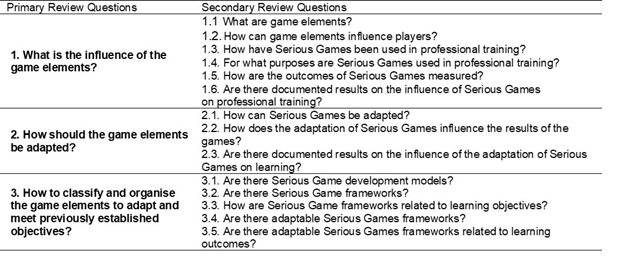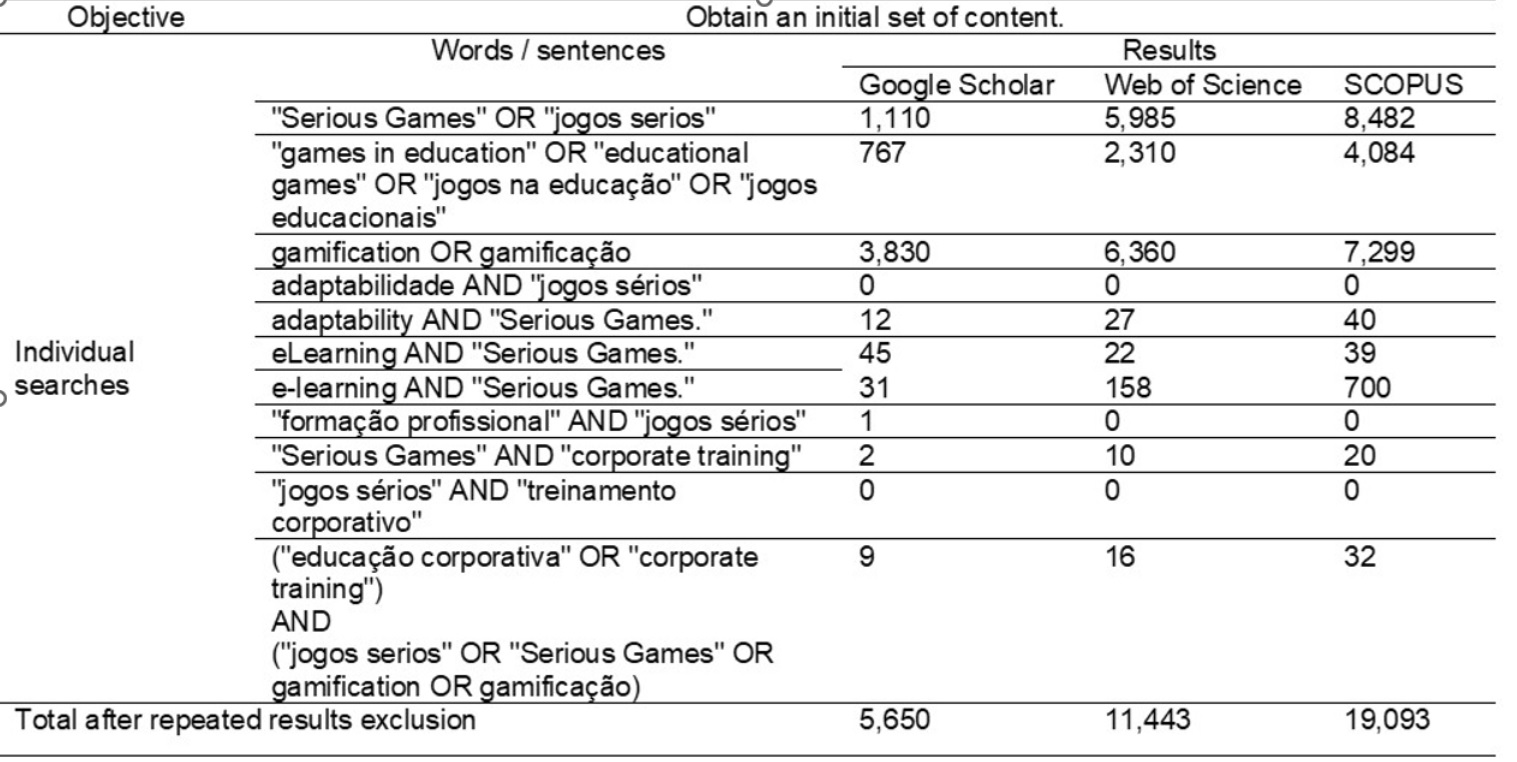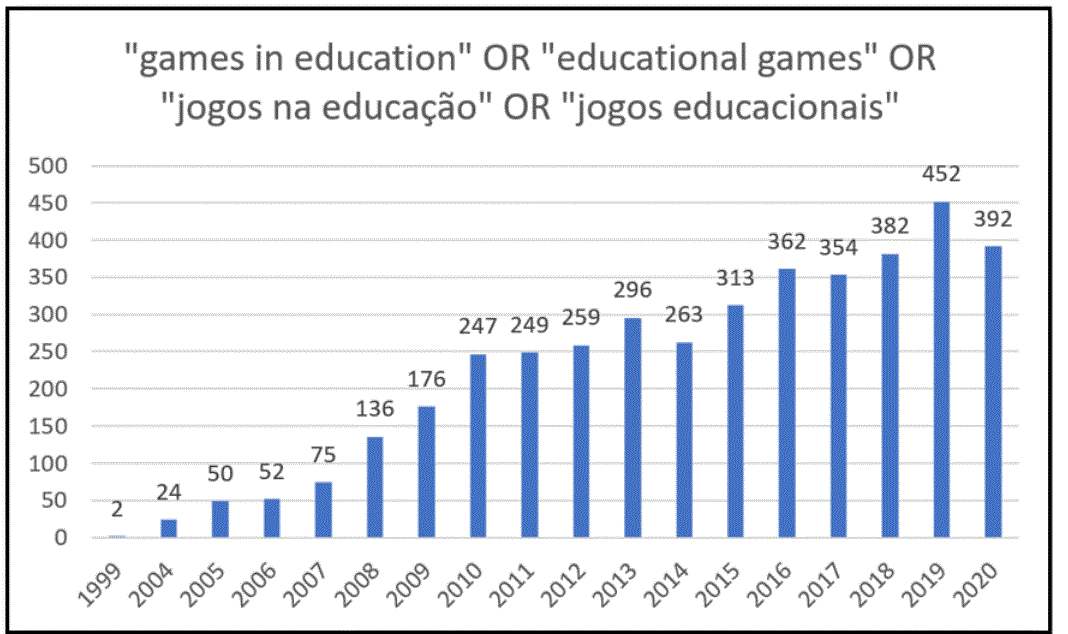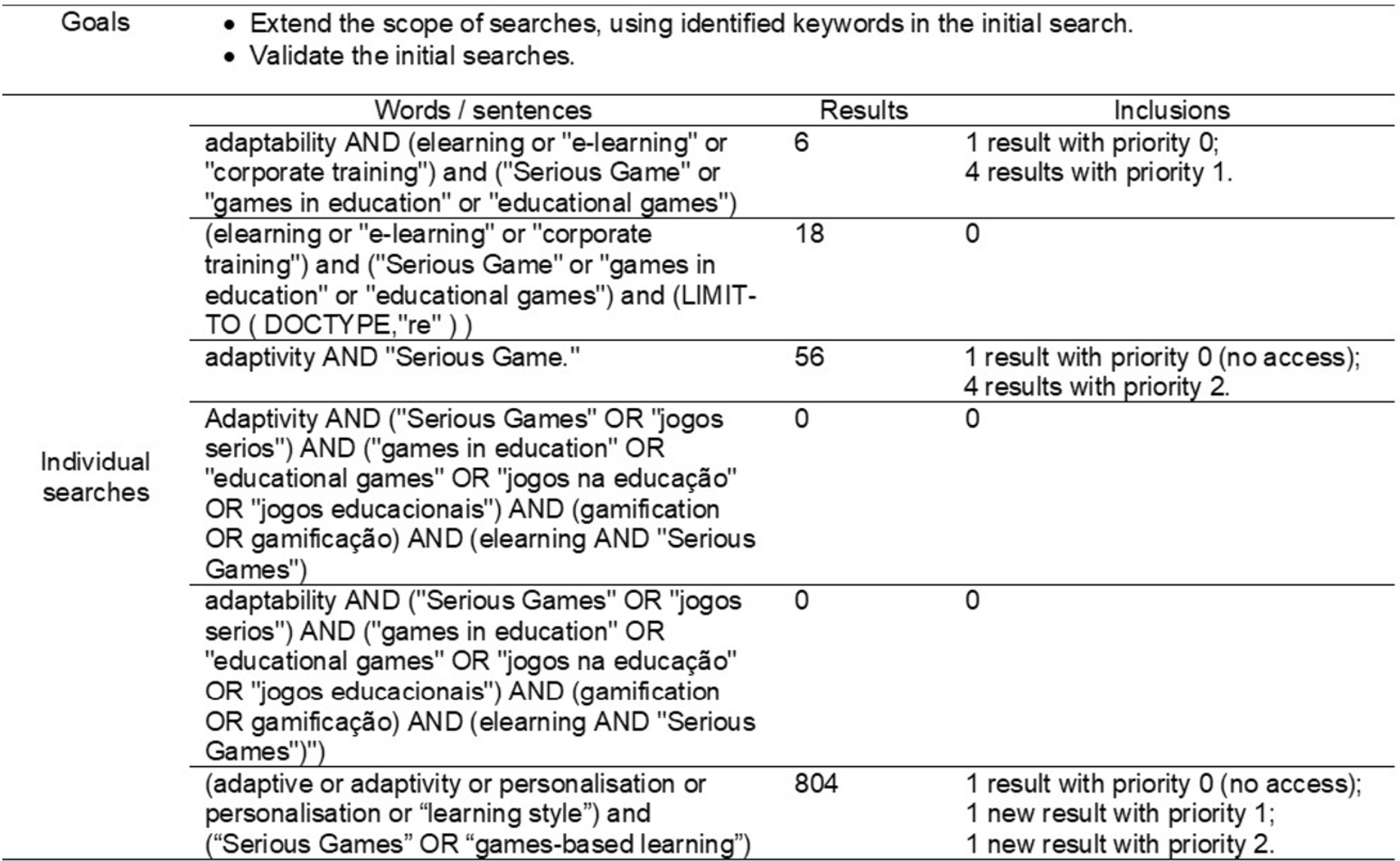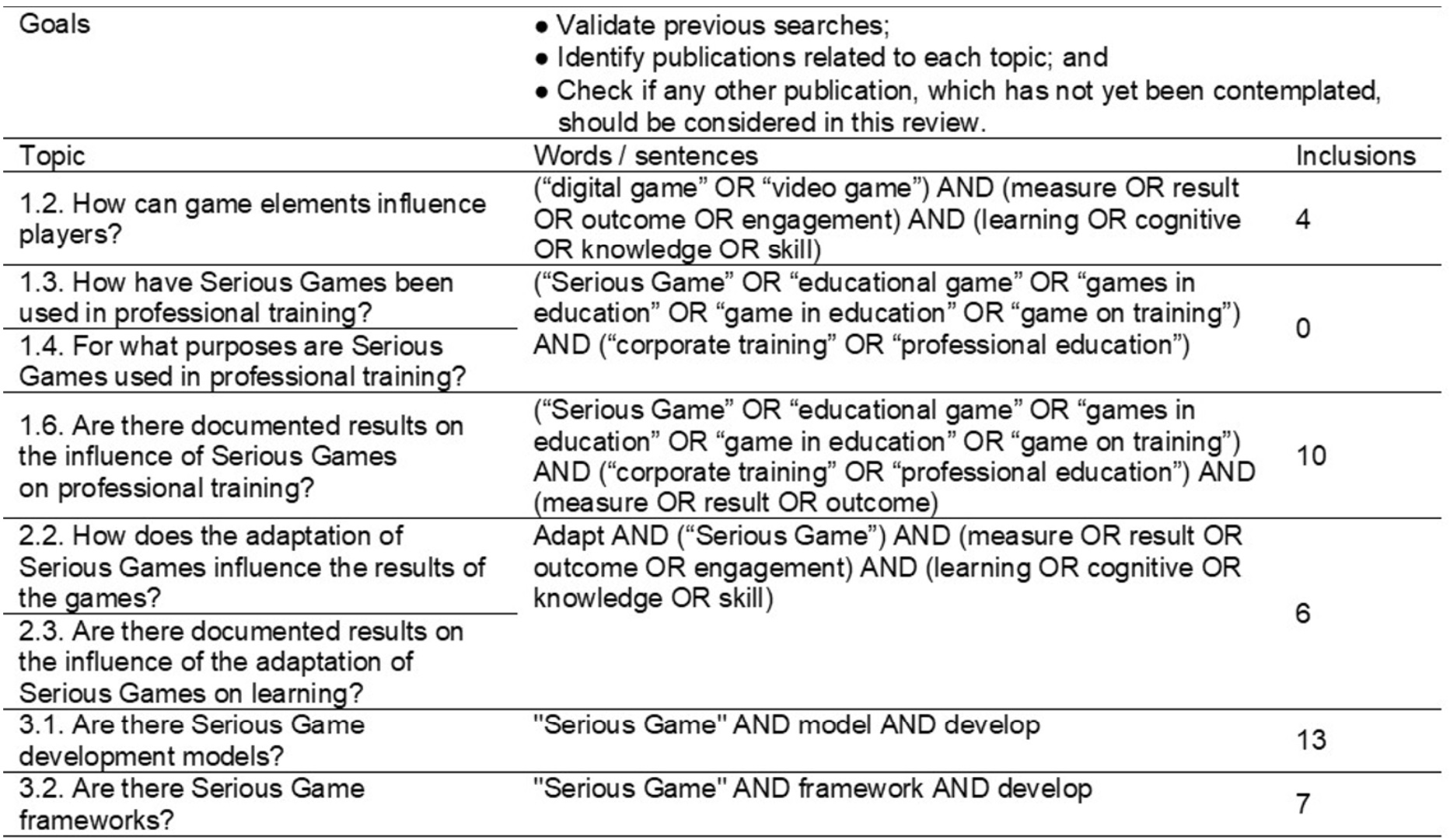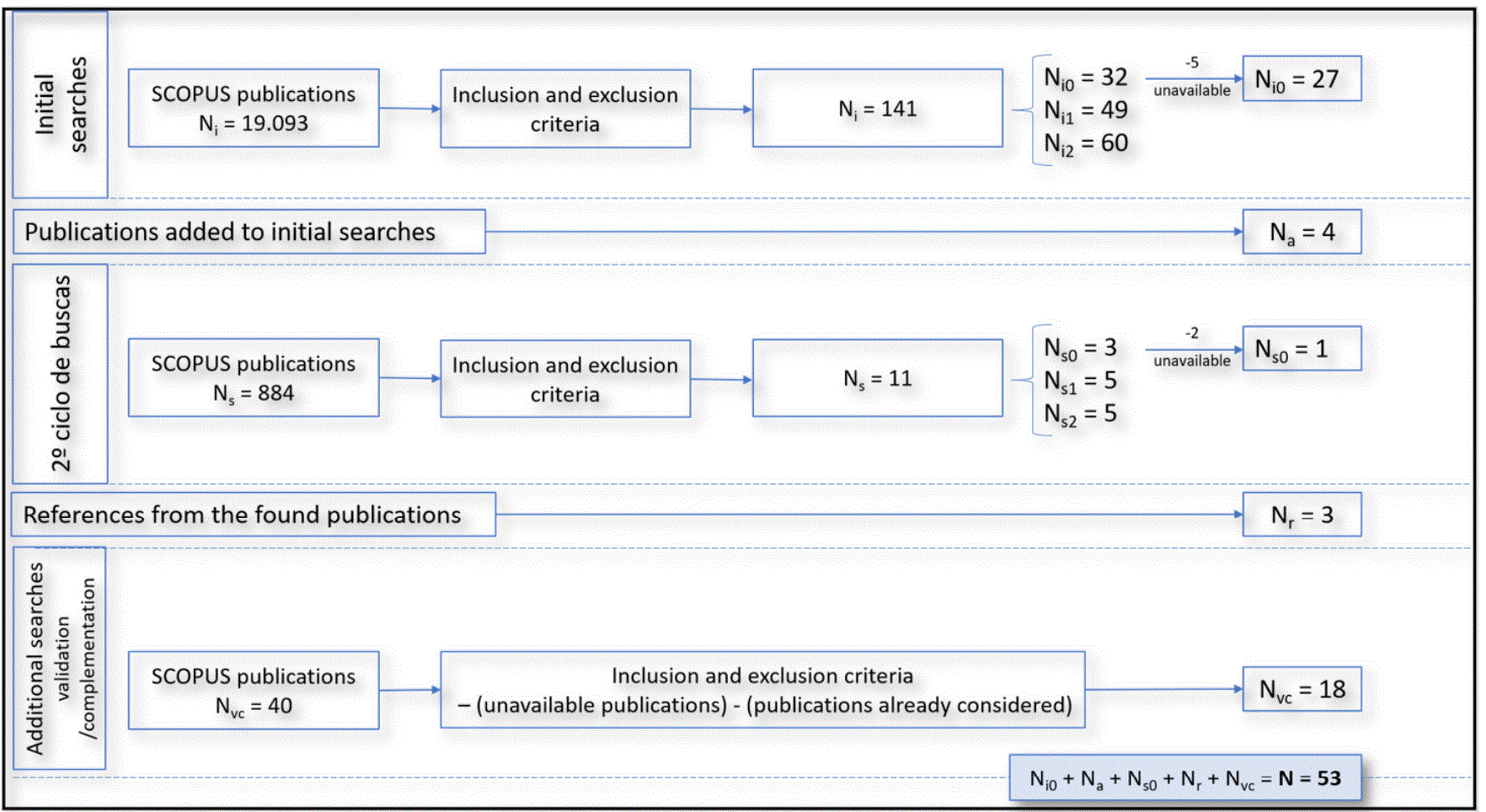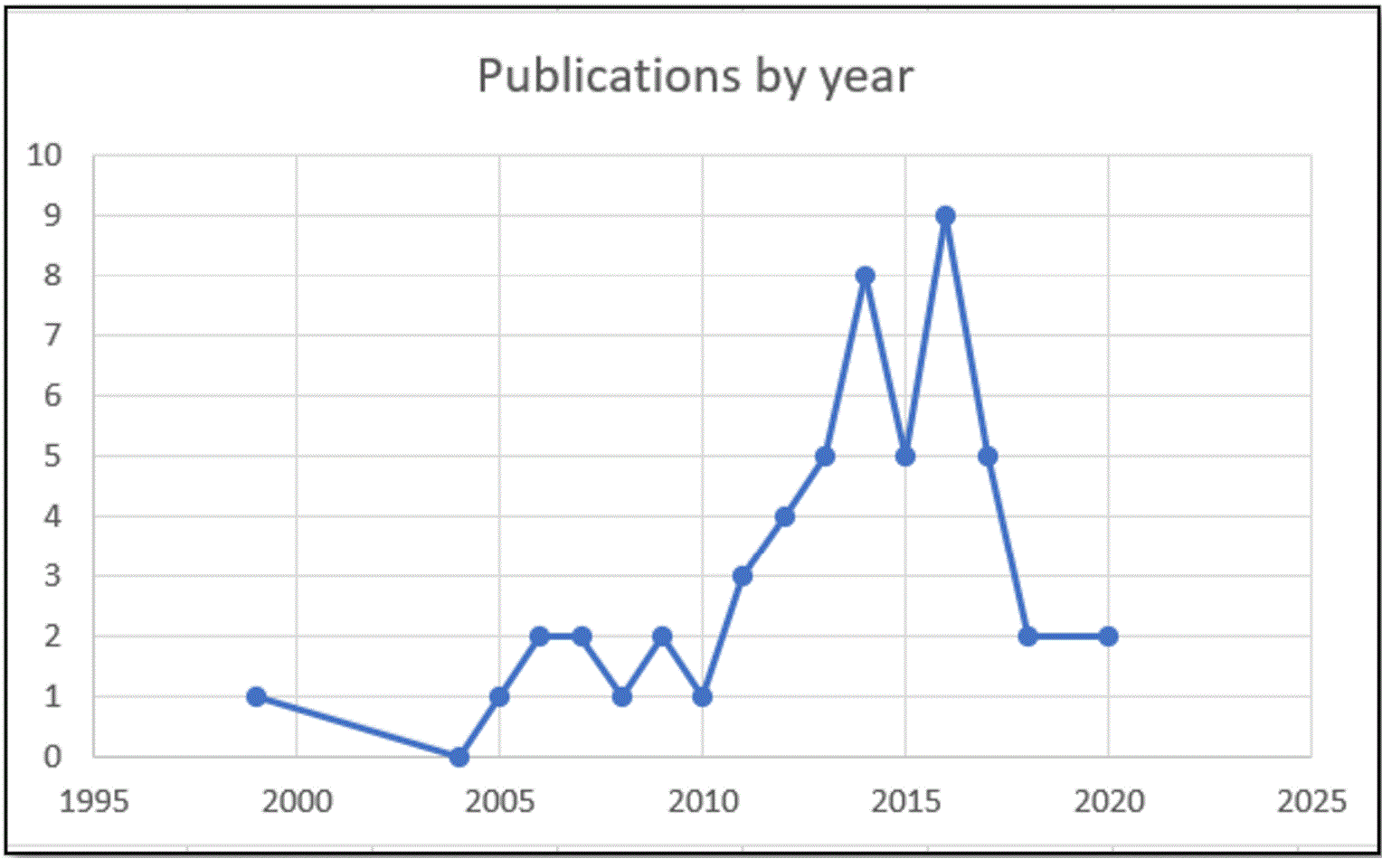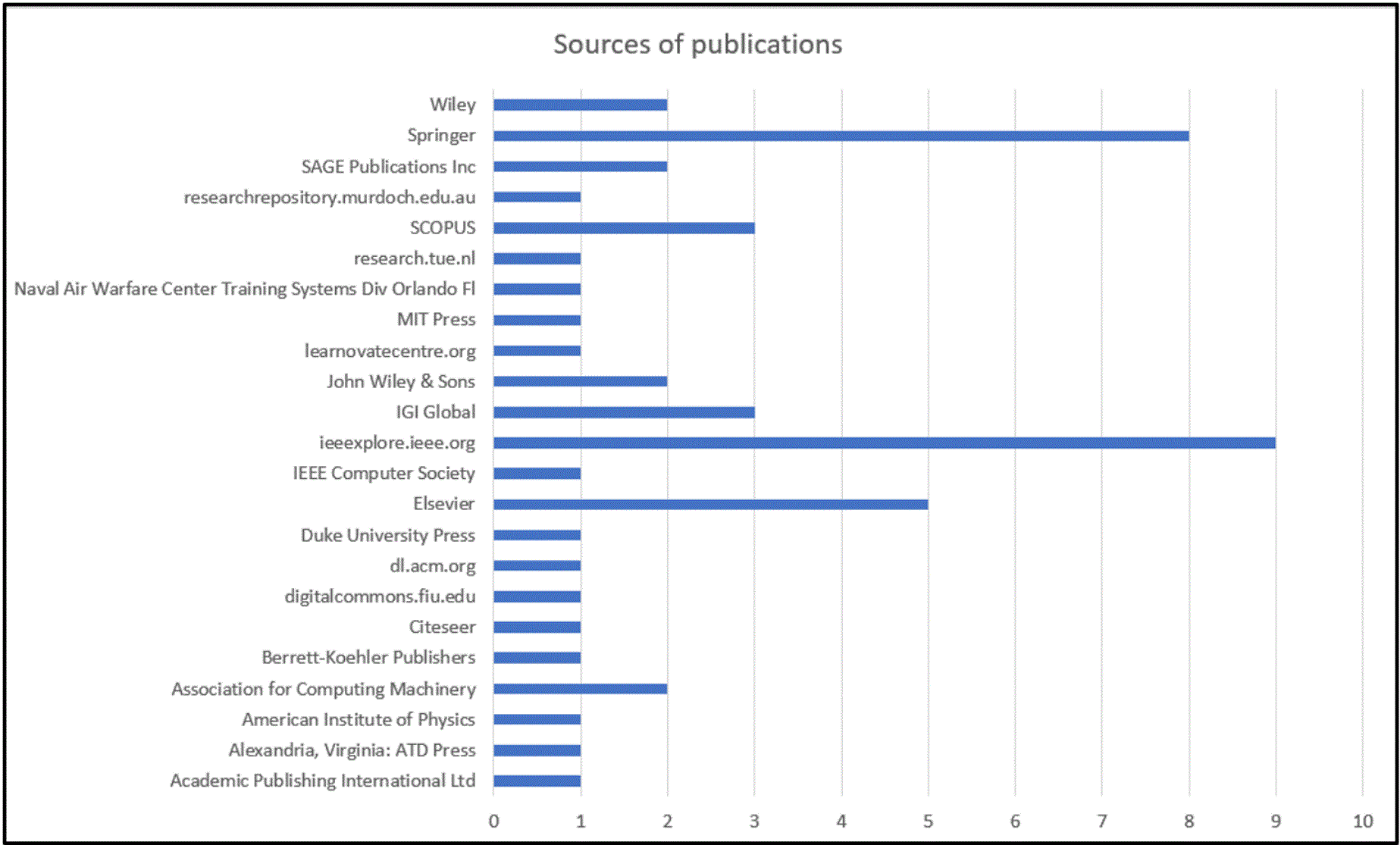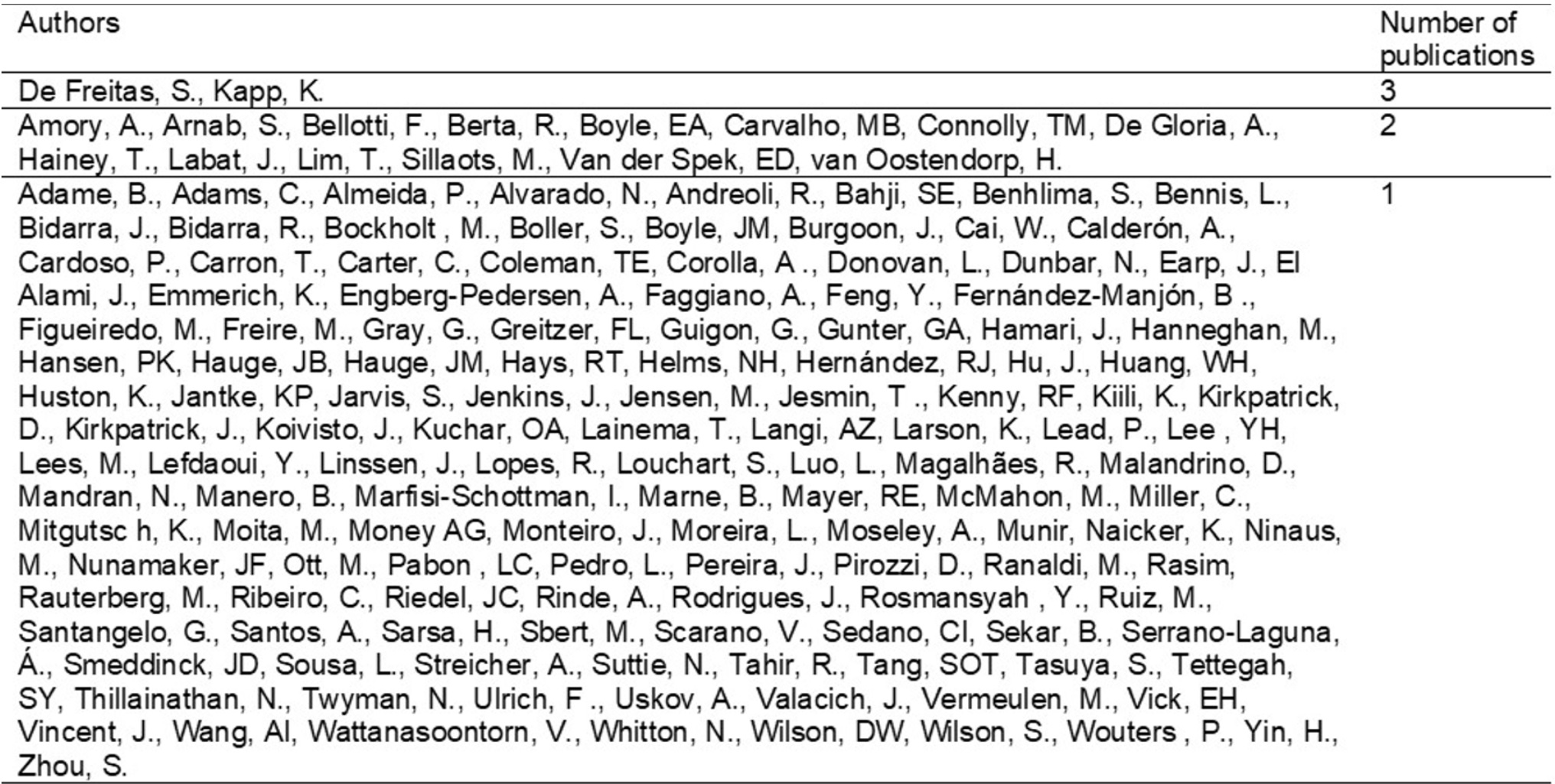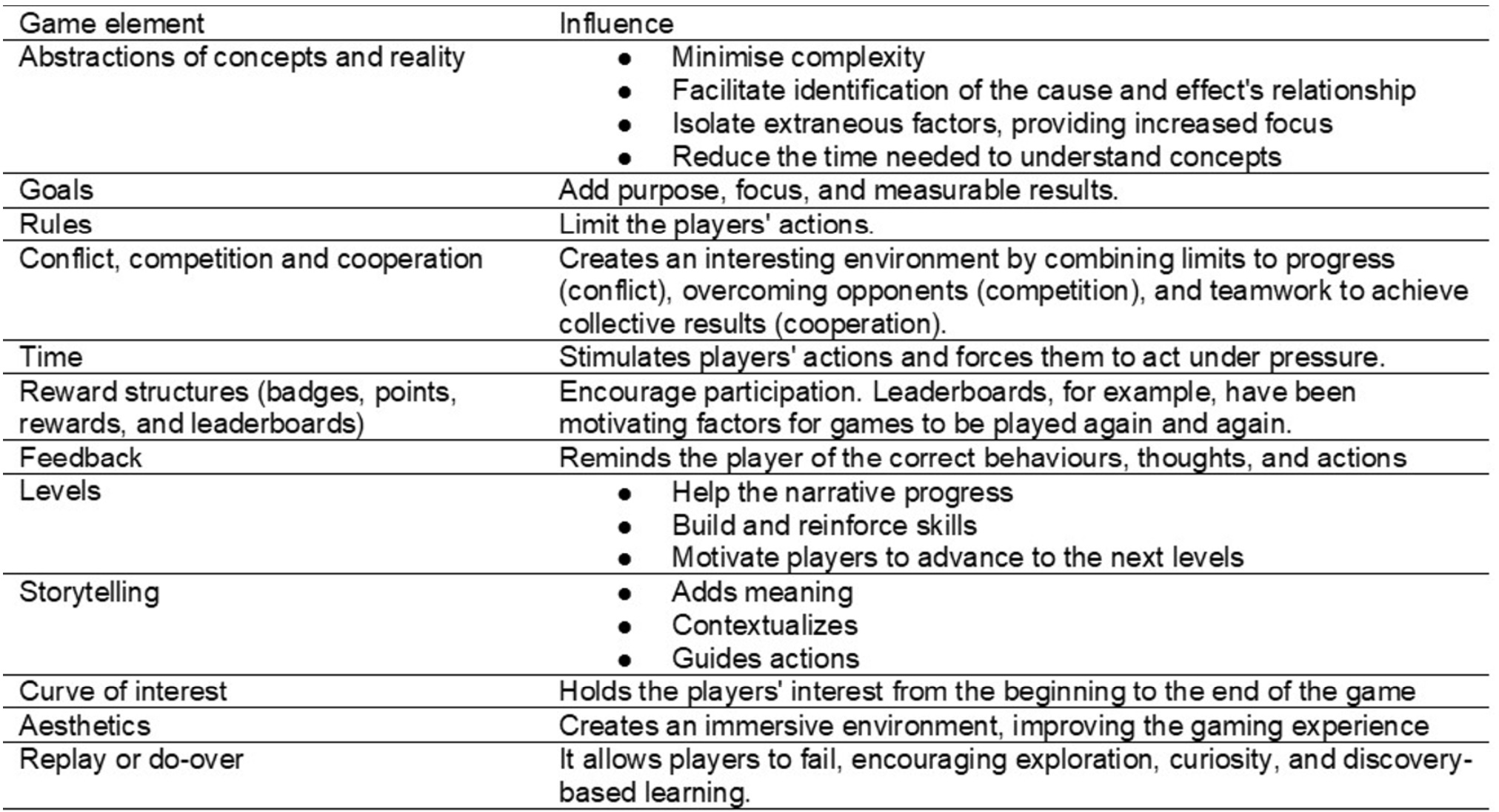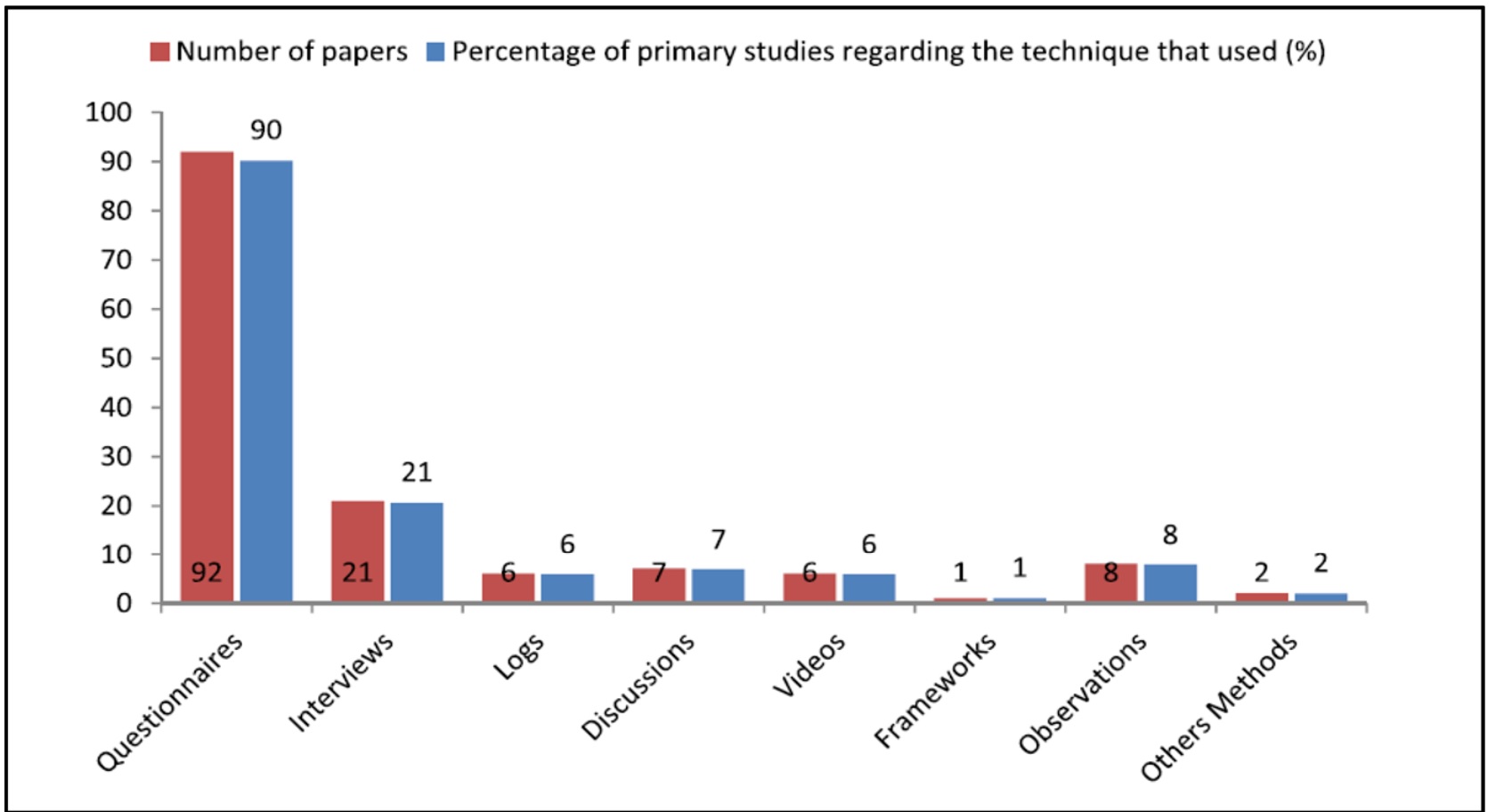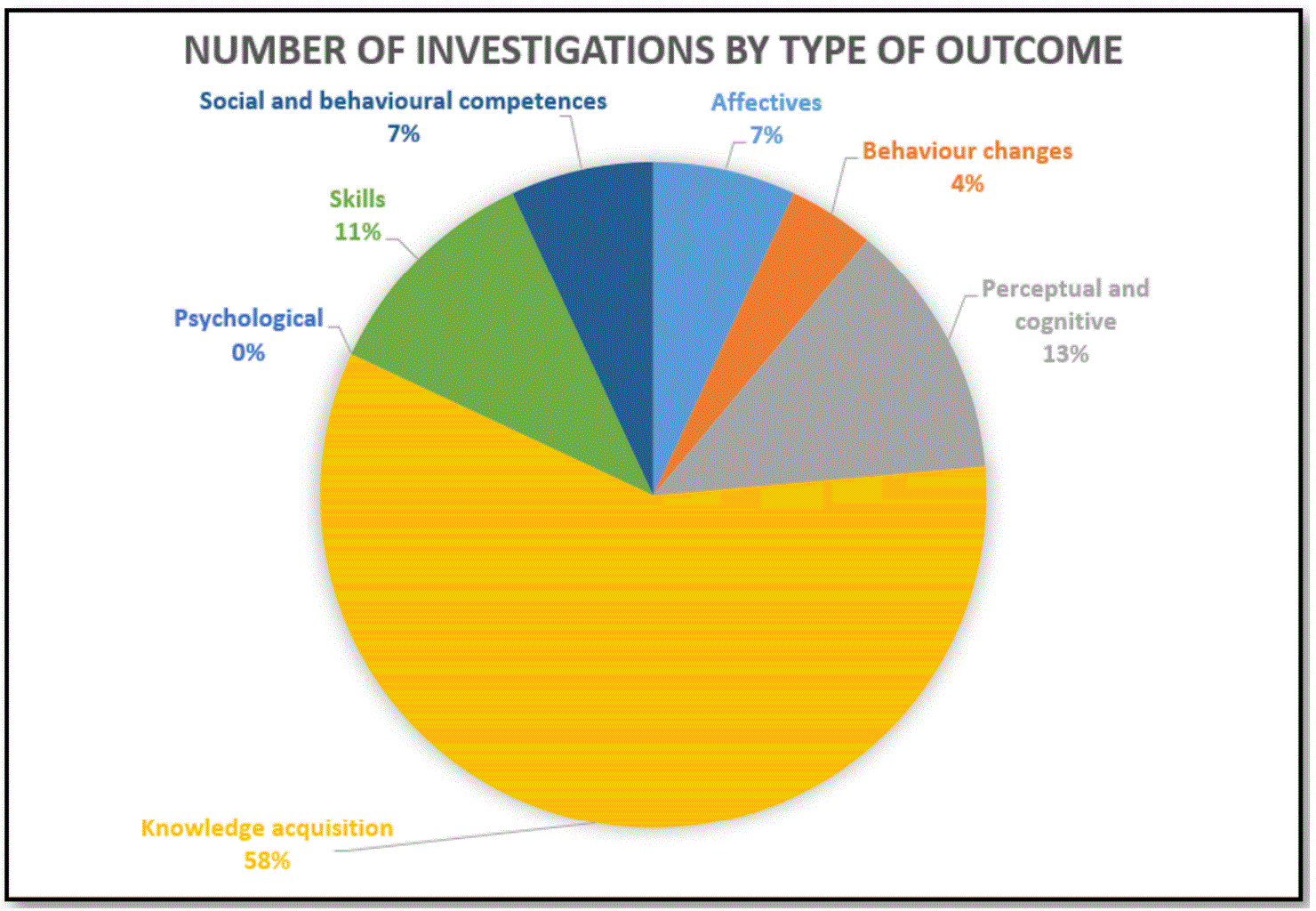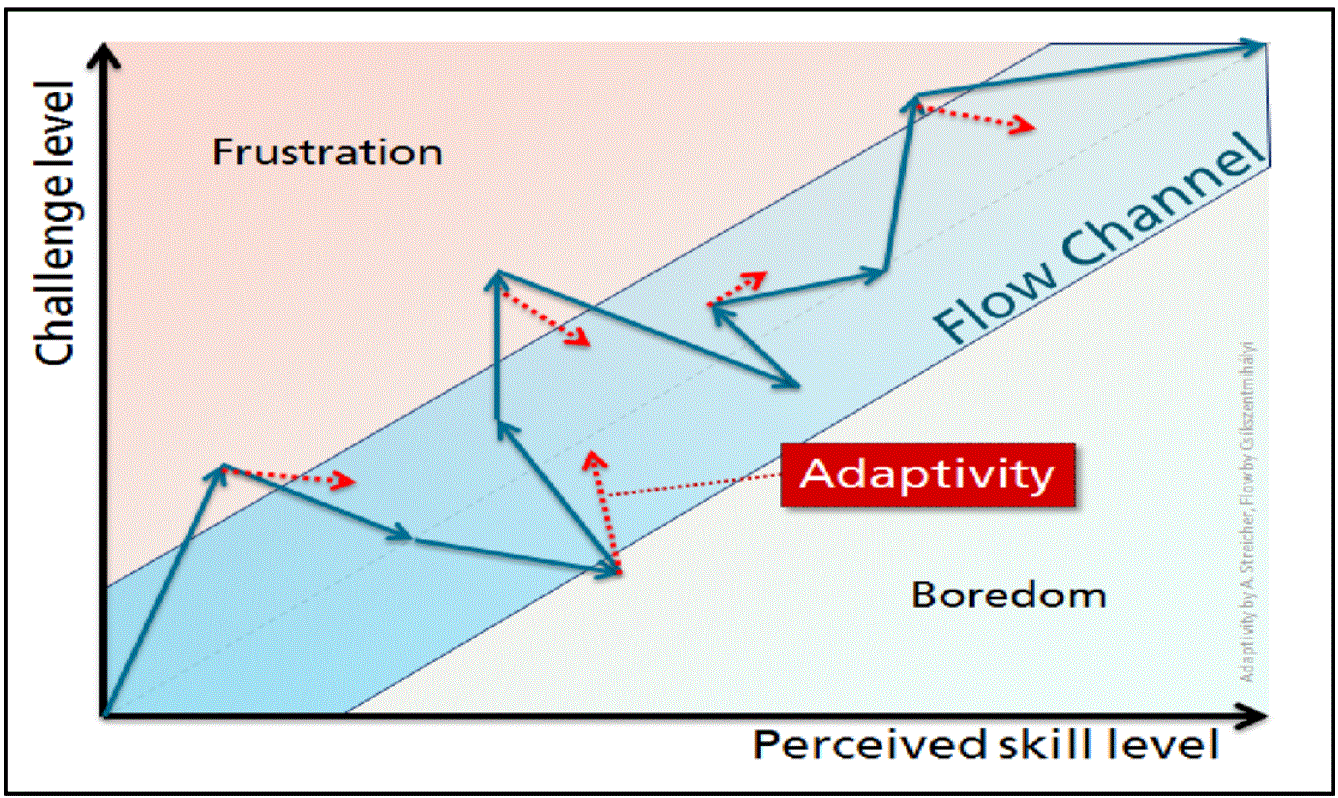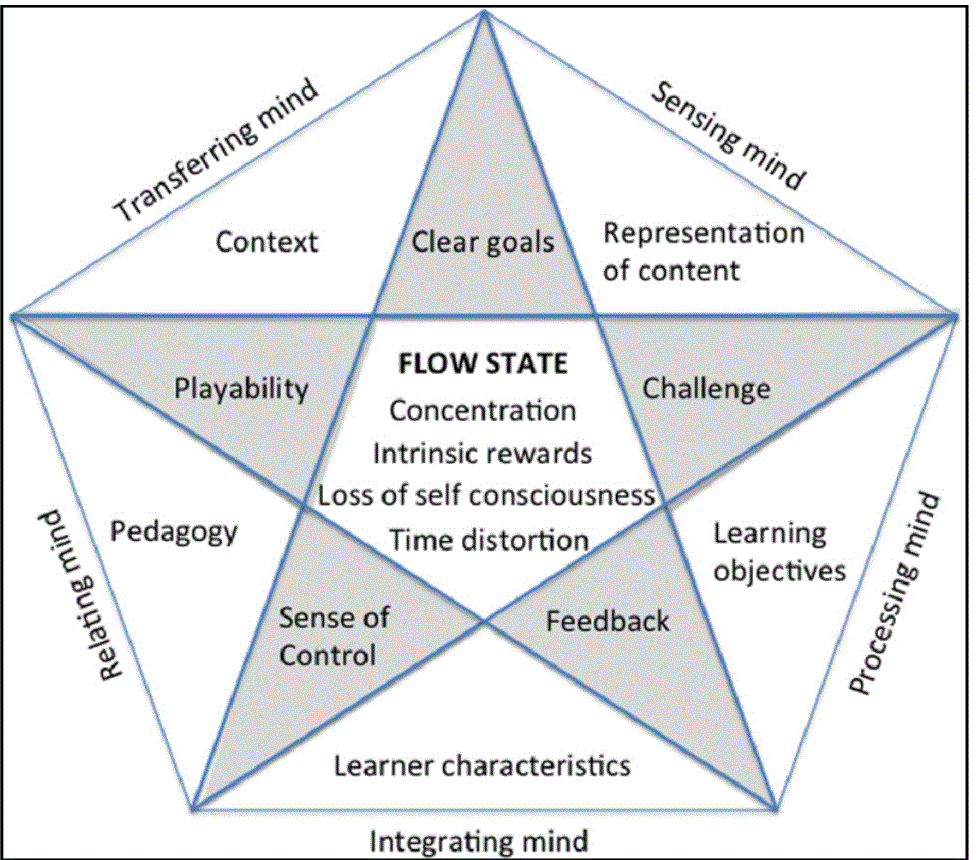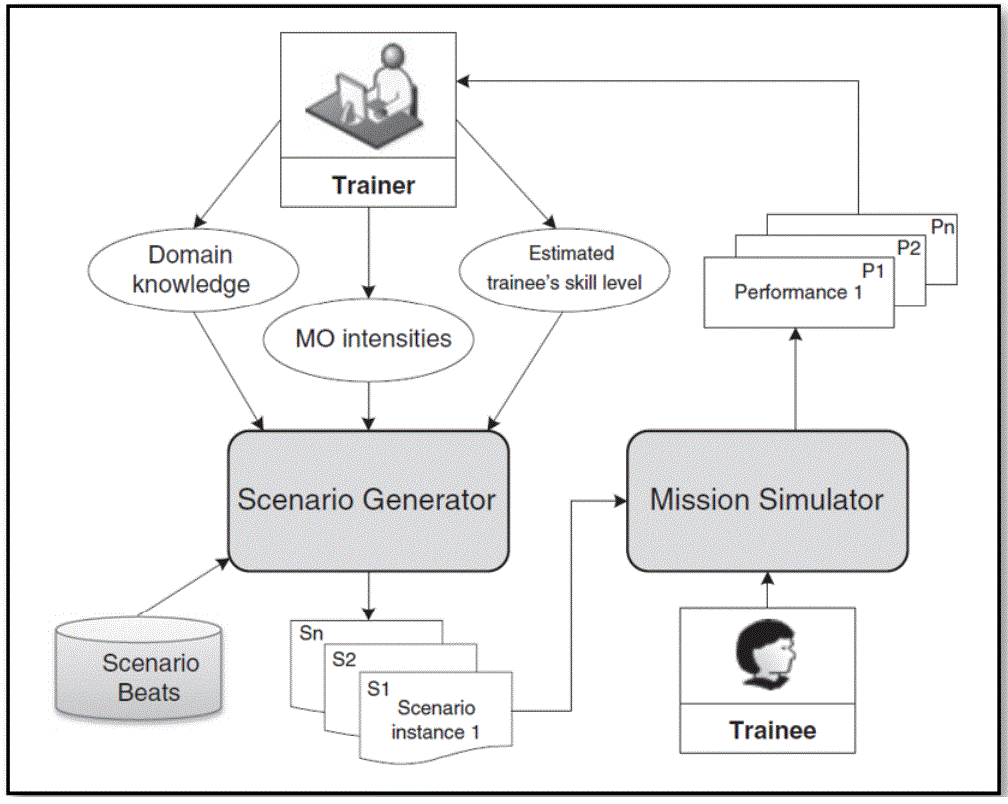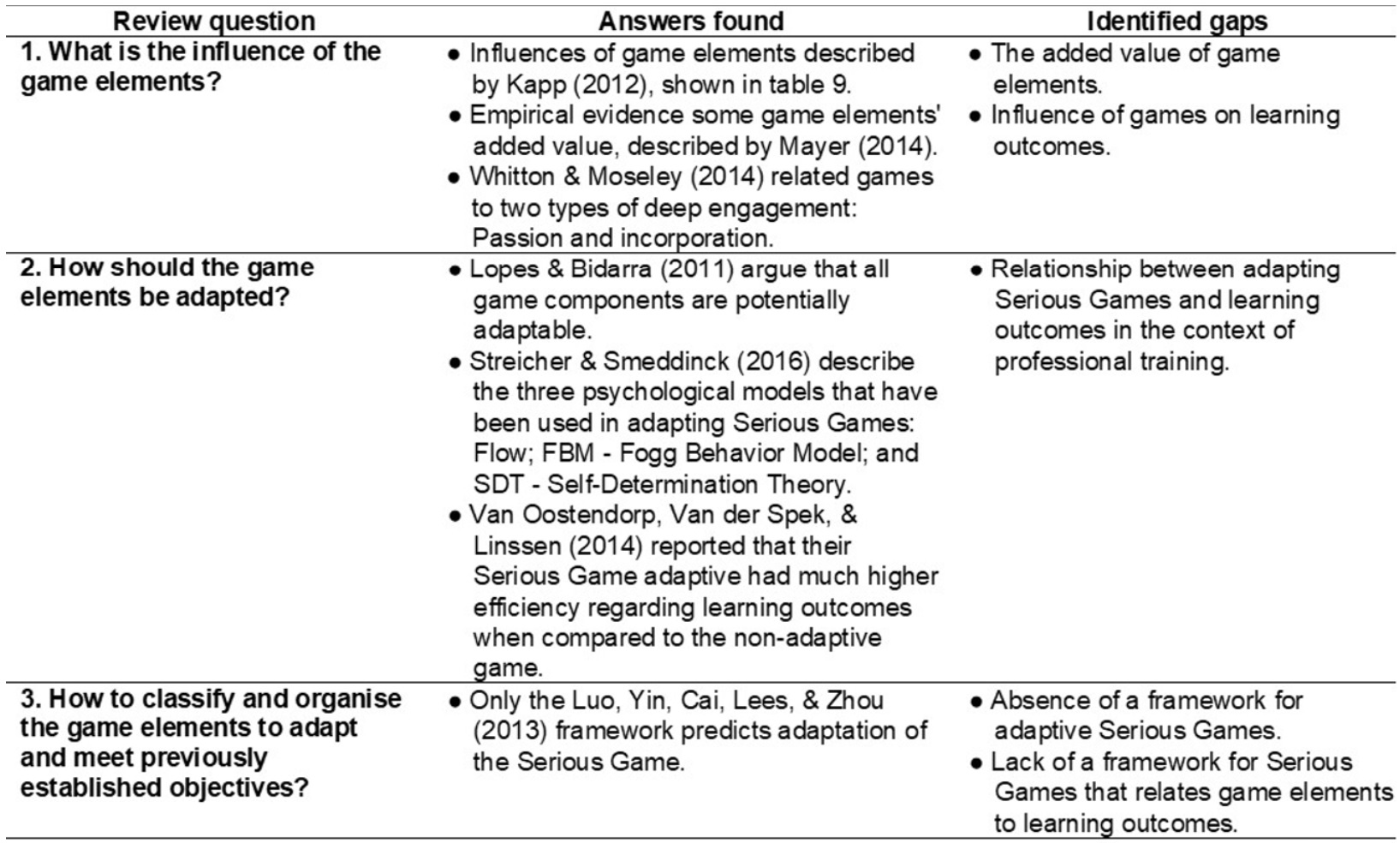1. Introduction
Serious Games are games with serious purposes besides entertainment. The junction of the games and serious activities’ universes can generate positive results, as in health and military training applications, among others.
Clark Abt, a reference in this area, defines Serious Games in the following passage of his book:
“We are concerned with serious games in the sense that these games have an explicit and carefully thought-out educational purpose and are not intended to be played primarily for amusement.” (Abt, 1970/1987, p.9)
In this definition, the educational purpose's presence highlights the difference in its use from entertainment games.
Mayer (2014) defines Serious Games for learning as:
"Games for learning include both game features, intended to motivate learners to engage in game playing, and instructional features, intended to foster appropriate cognitive processing during game playing." (Mayer, 2014, p.29)
The similarities between the learning process and the act of playing are cited by O'Brien & Toms (2008). Both are usually long, complex, and difficult; besides, the games are associated with learning because the player needs to learn how to play. The same authors complement this finding by observing that, just like games, learning is an interactive process that challenges learners and has rules for new knowledge and skills acquisition.
Serious games are used in various areas and with diverse content to engage the users in serious activities.
There are many studies about Serious Games in several areas. One of the areas in which they are widely used is science education, as described in the literature review conducted by Kara (2021), which points out that these games have been used since elementary school.
In professional training, they have been used in various contexts for more than two decades, in various training courses, for instance, on compliance or related to specific procedures.
Among the different aspects considered as relevant for the development of efficient Serious Games, “fun” has been one of the most important, as investigated by Ferreira de Almeida & dos Santos Machado (2021), as it is an inherent property of games. Thus, preventing Serious Games from becoming boring or simply ceasing to be fun is key to maintaining the game characteristic.
Larson (2020) cites that gamification initiatives in the workplace are beneficial to companies to, for example, strengthen employee recruitment and retention, increase program adherence, and improve job performance. This author cites:
"Motivation, recruitment, and training have been key focus areas for application of gamification in the enterprise setting." (Larson, 2020, p.319)
Corporations are interested in Serious Games as a potential tool to improve training effectiveness (Bachvarova, Bocconi, van der Pols, Popescu, & Roceanu, 2012). However, these authors highlight the necessity to measure the application of what the learners have learnt during the game:
"… there is the need to assess not only what the employee has learnt, but also how this knowledge is applied." (Bachvarova, Bocconi, van der Pols, Popescu, & Roceanu, 2012, p.222)
Serious Games contributions to improving learning outcomes, such as acquiring knowledge or skills improving, are evidenced in some research, both in the academic and corporate markets.
Nevertheless, there are challenges for the efficient application of Serious Games and among them are the adaptation and the evaluation of their results. The absence of adaptation in the games can result in a loss of efficiency in learning when users perceive the game dynamics and evolve without achieving the learning objectives, and in the impossibility of applying the game again to the same users, as they already know its content (Lopes & Bidarra, 2011).
Martin, Casey, & Kane (2021) argue that dynamic game adjustment is important to provide both a challenging and fun experience and effective learning, avoiding tasks being too easy or difficult, and keeping the player's focus on a learning task within a game.
Mayer (2014) highlights, however, that there are still few existing evidence-based approaches used to assess the contribution of Serious Games to learning.
With the main objective of investigating how Serious Games have been used concerning their adaptation of both content and resources in professional training, this review aims to map the use of Serious Games in professional training, to verify what forms of adaptation are used in Serious Games and to identify models and frameworks of Serious Games that predict adaptation of the game elements.
The initial motivation for this research was to identify the added value of game elements to learning outcomes as the starting point to develop a conceptual framework of adaptive Serious Games that could clarify the relation between their adaptation and the learning outcomes.
Based on this motivation, research questions have been formulated, shown in Table 1 as review questions for this literature review.
Initially, this article presents the use of Serious Games in professional training and, in the general context, the types of evaluation, investigation and measured outcomes in these games. Then, the forms of adapting the Serious Games and the technologies used are shown. Serious Games models and frameworks are also listed, and evidence of the relationship between adaptable Serious Games and learning outcomes is investigated.
Section 2 of this article presents the methodology used to carry out this literature review on the adaptation of Serious Games in professional training, followed by the results found, in sections 3 -Results and 4 - Discussion. Finally, the conclusions and some suggestions for future research are presented in section 5.
2. Methodology
The present literature review is justified by two of the three reasons given by Kitchenham (2004) for conducting literature reviews:
To establish a knowledge base for positioning new research activities.
To identify gaps in current research that may suggest future investigations.
It is hoped, in this literature review, to map current research on adaptive serious games used in professional training and identify gaps in research in this context.
According to the protocol predicted by Kitchenham (2004), the stages of a literature review were conducted, i.e., search, data extraction, recording and synthesis of results.
In the search stage, research was carried out at three different moments, with three specific objectives:
First, individual initial searches were conducted to determine the initial search set;
After reading the articles resulting from the initial searches, new searches were conducted with new keywords identified in these publications and new articles and books were inserted from the references the initial search set;
For each review question, new searches were conducted to confirm previous searches.
In the first search stage, individual searches were carried out so that it was possible to identify the number of existing publications related to each topic. These initial searches, performed in the SCOPUS, Web of Science and Google Scholar databases, are listed in Table 2, where the search criteria and the results for each database are also shown.
From these initial searches’ results, it was decided to use only the SCOPUS database, as it returned more results for the researched themes.
After the individual searches, the results were jointed and filtered using the inclusion and exclusion criteria described in Table 3.
It is important to note that although there is a large number of publications regarding Serious Games, Gamification and Educational Games in recent years when applying the inclusion, exclusion and classification criteria, the years 2019 and 2020 did not present publications that meet these criteria.
An example of this progression between the number of publications is shown in figures 1 and 2, where it is possible to observe the number of publications relative to Educational Games.

Figure 2 Inclusion and Exclusion Criteria Applied to Educational Games Related Publications per Year
After reading the abstracts, the 141 remaining results were classified according to the criteria described in table 4.
Twenty-seven (27) among the 32 results classified as priority 0 were read, as the full content of 5 of them were not accessible.
Other articles and books were added to the initial research: The gamification of learning and instruction: game-based methods and strategies for training and education (Kapp, 2012); Play to Learn (Boller & Kapp, 2017); Computer games for learning: An evidence-based approach (Mayer, 2014); Deconstructing Engagement: Rethinking Involvement in Learning. Simulation and Gaming (Whitton & Moseley, 2014).
After these readings, other keywords have been identified and, with them, new individual searches performed, described in Table 5. In these searches, the same prior criteria of inclusion, exclusion and classification of results were used, which represented additions in the list of contents to be analysed, shown in table 5.
Those articles' references that met the inclusion and exclusion criteria and were classified as priority 0 were included in this review.
To answer some of the secondary research questions, new searches were conducted, with specific sets of keywords, aiming to validate the previous searches, to identify the publications related to each topic and to check whether any other publication, besides the ones previously analysed, should be considered in this review.
The additional validation/complementation searches are shown in Table 6, where all publications, regardless of their priority classification, were included.
The same exclusion criteria mentioned in table 3 were applied to the new inclusions and after verifying which publications had not been considered in previous searches, the result set had 53 publications.
In this literature review, all publications classified as priority 0, related to all searches mentioned above and references of these first ones also classified as priority 0 were read. Besides that, all articles classified as priority 1 and 2 for the additional validation/complementation searches were read.
All searches performed in this literature review can be summarized in figure 3.
Figure 4 shows the distribution of the 53 publications analysed in this research. It is possible to see a higher concentration between 2012 and 2017, corresponding to 64.3% of the total amount of papers considered here, with 2016 standing out with 9 publications.
It should be highlighted that, as mentioned before and shown in figures 1 and 2, although there is a large number of publications in this research's scope in recent years, 2019 and 2020 publications did not meet the inclusion, exclusion and classification criteria and, thus, are not present in the cited 53 publications in this research.
In figure 5, the five main sources of publications used in this research, Institute of Electrical and Electronics Engineers - IEEE, Springer, Elsevier, IGI Global and SCOPUS (where the publication is only identified in this index), are responsible for 52.8% of the publications analysed.
This literature review presents the contribution of 150 authors, listed in table 7, where the quantity of publications of each one is identified.
The literature review publications, 7 of the 53 analysed, are listed in Table 8, where it is possible to observe the different themes associated with the present review.
3. Results
The results found in this literature review were synthesised according to the most common synthesis methods steps, described by Dresch, Lacerda, & Júnior (2020), as follow.
3.1. Review Question 1: What is the influence of the game elements?
In order to identify the influence of game elements on users, it is first necessary to determine what game elements are and how they make up a game.
Boller & Kapp (2017) define game as:
"A game is an activity that has a goal, a challenge (or challenges), and rules that guide achievement of the goal; interactivity with either other players or the game environment (or both); and feedback mechanisms that give clear cues as to how well or poorly you are performing. It results in a quantifiable outcome (you win or lose, you hit the target, and so on) that usually generates an emotional reaction in players." (Boller & Kapp, 2017, p.4)
Game elements are components or features that enhance the players’ experience and aid their immersion in the game (Boller & Kapp, 2017). These elements can be both challenges and objectives and interactive activities or the game mechanics themselves.
A large number of game elements and their diversity were the subject of the literature review of the games conducted by Sillaots and Rinde (2016). The authors listed 103 game elements (Sillaots, 2016) and verified their frequency of use and relationships.
Game elements have also been used in gamification initiatives. Therefore, investigating the use of game elements in this kind of initiative enables identifying their influence.
As an example, the research conducted by Hamari, Koivisto, & Sarsa (2014) has identified that points, leaderboards, and badges are the most commonly used game elements in gamification initiatives.
Table 9 summarizes what is described in Kapp (2012) regarding the influences of game elements.
Mayer (2014) mention the influences of games as:
"Like any successful art form, a good game creates enjoyment, elicits emotional response, provokes thought, and/or motivates action." (Mayer, 2014, p.24)
Another notable feature of games is the engagement of their players, described by Boyle, Connolly, Hainey, & Boyle (2012) as a subjective experience that happens during a game, associated with fun, immersion, "flow", and presence.
Whitton & Moseley (2014) highlight the differences between engagement in each kind of activity related to Serious Games:
"Two disciplines that approach the idea of engagement in fundamentally different ways are education and games design." (Whitton & Moseley, 2014, p.2)
These same authors analyzed the different definitions and models of engagement related to education and games and proposed a model of engagement used in both situations, called the authors’ “engagement with learning” model. This model combines the different types of engagement into two groups, superficial engagement, associated with behaviours and extrinsic motivation, and deep engagement, related to more significant psychological interaction during an experience. It is highlighted that two types of deep engagement are related to games: Passion and incorporation.
Broadly, Jantke (2010) defines Serious Games as any games used for applications beyond entertainment.
Professional training is one of the applications of Serious Games for, at least two decades, in several contexts: Military (Hays, 2005; Greitzer, Kuchar, & Huston, 2007; Engberg-Pedersen, 2017); Telecommunications (Almeida et al., 2011); General businesses (Donovan & Lead, 2012; Kapp, 2013; Uskov & Sekar, 2014; Boller & Kapp, 2017); Healthcare (Wattanasoontorn, Hernández, & Sbert, 2014); Manufacturing companies (Riedel, Feng, Hauge, Hansen, & Tasuya, 2015); Hospitality (Pabon, 2016); Finance (Larson, 2020).
They have been used in professional training by many companies of different verticals in knowledge acquisition, skills practice, and attitude change.
Although Serious Games are used in several areas of the corporate market, both in training and in other activities, such as in recruitment and marketing/sales (Donovan & Lead, 2012), the measurement of their actual effects on learning is considered by Sousa et al. (2016) one of the biggest challenges for the acceptance of Serious Games as an effective educational method.
The process of Serious Games evaluation should consider several approaches, such as the four levels of evaluation of Kirkpatrick & Kirkpatrick’s (2006) and, as advocated by Emmerich & Bockholt (2016), the six components of the Mitgutsch & Alvarado (2012) framework for Serious Game evaluation.
The Serious Game’s assessment can be performed in several ways, through questionnaires, interviews, access/activity records (logs), discussions, videos, frameworks, observations, among other methods listed by Calderón & Ruiz (2015). These same authors found that questionnaires are the most used type of assessment of Serious Games, as shown in Figure 6.
Wouters, van der Spek & van Oostendorp (2009) researched the effects of Serious Games and their learning outcomes. These authors verified the effects of Serious Games concerning their elements/features, such as better recall of relevant knowledge and better spatial cognition, and comparisons with other media types, such as improved acquired knowledge and higher motivation than other media types.
Mayer (2014) states that:
"The most appropriate research method for assessing the generality of instructional effects of games and game features is a quasi-experimental comparison in which the differences between treatment and control groups are examined for various subgroups, learning contexts, or types of content." (Mayer, 2014, p.53)
Although there is research on Serious Games, Mayer (2014) highlighted that there are still few existing evidence-based approaches to assess the contribution of Serious Games to learning.
In the literature review on the empirical evidence of the impacts and outcomes of using digital games and games for learning conducted by Boyle et al. (2016), research on Serious Games was grouped by type, as shown in Figure 7, into correlational, qualitative, quasi-experimental, RCT and survey.
In this review, Boyle et al. (2016) identified that the most investigated outcome was knowledge acquisition, as shown in Figure 8.
3.2. Review Question 2: How should the game elements be adapted?
When investigating how Serious Games can be adapted, it was found that they can be adapted in two different ways, cited by Streicher & Smeddinck (2016):
Adaptability, through the manual choices or parameterisations; and
Adaptivity, through dynamic changes over time, to adjust game contexts.
These same authors, when searching for state of the art on customisation and adaptation of Serious Games, identified three psychological models that have been used in the adaptation of serious games: Flow (to keep players engaged, as shown in figure 9); FBM - Fogg Behavior Model (to motivate players to participate in the game) and SDT - Self-Determination Theory (which relates intrinsic motivation to the satisfaction of players’ needs).
Streicher & Smeddinck (2016) comment that adaptation can vary:
"Examples range from more sophisticated path planning algorithms for massive amounts of NPC steering, to dynamically extendable models like behavior trees for intelligence-akin behavior, or to machines learning algorithms to learn human-like behavior." (Streicher & Smeddinck, 2016, p.10)
The architectures and methods used in adapting Serious Games are described in Rasim, Langi, Munir, & Rosmansyah’s (2016) research, as shown in Figure 10. The architectures used are based on rules, plans, organisations' descriptions, player fluency, learning styles, cognitive states and pedagogical scenarios. At the same time, the methods may or may not be agent-based
Rasim, Langi, Munir, & Rosmansyah (2016) relate adaptation of Serious Games to both technology optimisation and pedagogy:
"Adaptive serious games have two important disciplines, they are optimization of technology related to machine learning, and enjoyable learning related to science education/pedagogy." (Rasim, Langi, Munir, & Rosmansyah, 2016, p.2)
Related to the adaptivity challenges in Serious Games, Lopes & Bidarra (2011) argue that all game components are potentially adaptable through dynamic adjustments, i.e., game objects and worlds, game mechanics, NPCs - Non-Player Characters, narratives, and scenarios or missions:
“Potentially, all components that are considered at game development can become adaptive.” (Lopes & Bidarra, 2011, p.89)
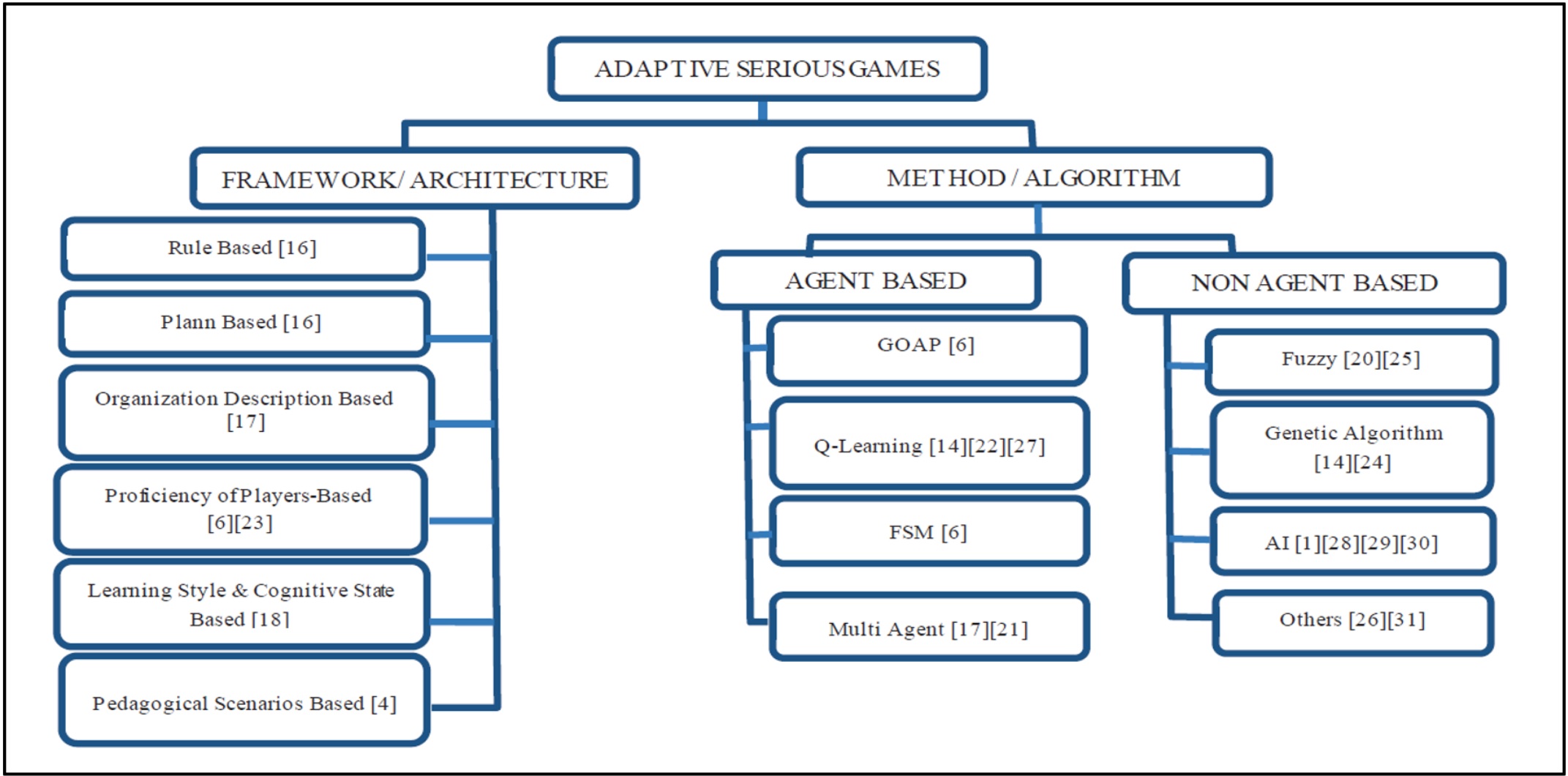
Rasim, Langi, Munir, & Rosmansyah (2016
Figure 10 Architectures and Methods Used in Adapting Serious Games
3.3. Review Question 3: How to classify and organise the game elements to adapt and meet previously established objectives?
In this research, some models of Serious Games were found, organised in table 10 in a chronological order, where it is possible to verify the evolution of the approaches in the development of Serious Games.
The Serious Games frameworks in the literature review are listed in Table 11, with their main characteristics.
These frameworks seek to relate theories of instruction and learning to the mechanics and elements of games, both with to design and development (de Freitas & Jarvis, 2006; Luo, Yin, Cai, Lees, & Zhou, 2013; Huang & Tettegah, 2014; Kiili, Lainema, de Freitas, & Arnab, 2014; Emmerich & Bockholt, 2016; Andreoli et al., 2017; Coleman & Money, 2020) as to evaluation (Mitgutsch & Alvarado, 2012; Wilson et al., 2016; Andreoli et al., 2017; Ulrich & Helms, 2017; Tahir & Wang, 2018).
Among the frameworks for Serious Games found, the Flow Framework, described by Kiili, Lainema, de Freitas, & Arnab (2014), stands out. This framework comprises four types of elements, listed in figure 11: Flow antecedents (necessary to provide an optimal experience); Flow state characteristics (describe what happens to players when they are in the flow state); Significant factors for learning (relevant factors for learning to occur); and mind lenses (relate learning to flow).
"We found that the students’ flow experience in the game was high and the findings indicated that sense of control, clear goals and challenge-skill dimensions of flow scored the highest." (Kiili, Lainema, de Freitas, & Arnab, 2014, p.367)
It is considered relevant to state that only Luo, Yin, Cai, Lees, & Zhou’s (2013) Framework predicts the Serious Game’s adaptation, from the generation of scenarios, depending on the player’s performance and on the game missions’ objectives, as schematised in figure 12. These authors have developed a framework to adaptive scenario generation, described as:
"In our work, the scenario generation for training is modeled as an interactive and iterative process, where the trainer and trainee are involved in a generation-training-evaluation cycle." (Luo, Yin, Cai, Lees, & Zhou, 2013, p.347)
In addition to the searches described in the previous section, to check the existence of research on the influence of adaptation of Serious Games in the professional training concerning learning outcomes, an additional query was performed in the SCOPUS database, using the sentence ‘(framework OR model) AND (“serious game” OR “educational game” OR “game for education”) AND adapt* AND (“corporate training” OR "professional training")’, which returned only two results, none of them presenting data on the adaptation of Serious Games in the professional training.
4. Discussion
In this literature review, it was found that different learning outcomes have been documented from the use of Serious Games, such as knowledge and skill acquisition, attitude change, motivation and communication (Wouters, van der Spek, & van Oostendorp, 2009).
These results focus mainly on the context of formal education (in areas such as science, biology, writing, mathematics and geography), but also military applications, health care (medicine) and commercial activities (CRM).
These results document positive, negative, and neutral contributions in practical applications, besides inconclusive investigations.
It was also possible to verify that the most investigated learning outcome in Serious Games is acquired knowledge (Boyle et al., 2016) and questionnaires are the most used type of assessment (Calderón & Ruiz, 2015). Moreover, the most used type of research, quasi-experimental research, corresponds to 45.8% of the research on Serious Games (Boyle et al., 2016).
Mayer (2014) concludes that the main contribution of game research is the union of cognitive and motivational domains:
"A major theoretical contribution of game research is to integrate both cognitive and motivational processes in a theory of learning with games. As theories become better specified, they can suggest specific research predictions for empirical testing." (Mayer, 2014, p.341)
However, Mayer (2014) defends a necessity of more studies associated with learning outcomes of Serious Games:
"Improvements are needed in assessing learning outcomes …” (Mayer, 2014, p.340)
As stated by Lopes & Bidarra (2011), all game elements are potentially adaptable, from scenarios to game mechanics, with emphasis on intelligent agents (such as NPCs) as the most used elements in online adaptations (during gameplay).
The technologies used for adapting Serious Games, according to Rasim, Langi, Munir, & Rosmansyah (2016), can be agent-based (GOAP, Q-Learning, FSM, Multi-Agent) or not (Fuzzy, Genetic Algorithm, AI, among others), as illustrated in Figure 10.
It has been found that the use of artificial intelligence in adapting Serious Games mainly focuses on dynamic difficulty adjustment and adjusting game mechanics and content (Streicher & Smeddinck, 2016).
There is still little documented evidence on the influence of adapting Serious Games on learning outcomes. Van Oostendorp, Van der Spek, & Linssen (2014) cite that the adaptive version of the Serious Game was much more efficient regarding learning outcomes and that this adaptation showed no differences regarding engagement.
Table 12 shows a summary of the answers to the review questions and the identified gaps in the research.
In this literature review, the analysed publications could be grouped into research areas shown in table 13. These areas are related to the application of Serious Games in professional training and how these games have been developed, evaluated, and adapted.
5. Conclusions and future research
This literature review sought to map the use of Serious Games in professional training. To this end, three cycles of searches were performed, which, after applying the inclusion, exclusion, and classification criteria, formed a set with 53 publications (figure 3).
In this review, to investigate some aspects, as the influence of game elements and the types of existing research on Serious Games, it was necessary to extend its context beyond the professional training.
It is noteworthy that this literature review was limited to publications in English and Portuguese until December 2020. The conclusions related to the three proposed review questions are:
5.1. What is the influence of the game elements?
Although there are publications regarding the influence of game elements, as cited by Kapp (2012) and listed in Table 9, more research is needed to determine empirical evidence of these influences, especially regarding the added value of some game elements (Mayer, 2014).
It was also noted that a significant influence that games can provide is deep engagement.
5.2. How should the game elements be adapted?
Potentially, all game elements could be adaptable, which could ensure greater player engagement and greater possibilities for the application of Serious Games.
Adaptation of Serious Games, which can be achieved from parameterisation by the player or from dynamic changes during the game, is usually based on psychological models, such as Flow.
It can be highlighted that Van Oostendorp, Van der Spek, & Linssen (2014) reported that their adaptive Serious Game had much higher efficiency regarding learning outcomes when compared to the non-adaptive game.
5.3. How to classify and organise the game elements to adapt and meet previously established objectives?
This research has identified models and frameworks for the development and evaluation of Serious Games that can classify and organise the elements of a Serious Game.
Although they present different parameters and dimensions, they all consider the existence of the domains of learning and games; and seek to relate the mechanics and elements of games to theories of instruction and learning. However, only Luo, Yin, Cai, Lees, & Zhou’s (2013) Framework predicts adaptation of the Serious Game, based on scenario generation, depending on player performance and the game missions' objectives.
Although there are several applications and investigations regarding Serious Games, in the scope of this literature review, i.e., adaptable Serious Games in professional training, with evidence of learning outcomes, it was not possible to identify specific investigations in this context. Some of the publications analysed, which come closest to this context, are related to Serious Games in academic education.
Also, this research has identified a dearth of frameworks linking learning outcomes and professional competencies.
By analysing the results obtained in this review, it was possible to identify and relate the concepts of the most commonly used dimensions in serious game frameworks, which served as a basis for future research to create a framework predicting adapting serious games to optimise learning outcomes.
The identified gaps in research indicate a need to adapt the existing frameworks, including adaptive features and learning outcomes as part of the predicted dimensions, and to deeply investigate the aggregated value of game elements in Serious Games, mainly the instructional ones.
In this context, it is suggested that future researches should be done within professional training, where Serious Games are used adaptively to check their efficiency concerning player engagement and learning outcomes, such as:
The added value of some game elements when in serious adaptable games;
Relationship between adaptation of some game elements and learning outcomes;
Relationship between learning outcomes and professional competencies.
Design of frameworks for the adaptation of Serious Games;
Design and development of models for the adaptation of Serious Games;
RCT type investigations to evaluate adaptive Serious Games concerning player engagement, knowledge acquisition, skill improvement during game interaction and in actual work contexts.
It is hoped that with investigations of those sorts, with the appropriate scientific rigour, it will be possible to relate the behaviour of game elements to learning outcomes in professional training. Furthermore, contribute to the instructional method improvements in this context and certify the Serious Games application in situations and with proven resources.
This literature review is the first step of research to develop a development and evaluation framework of adaptive Serious Games in professional training to improve learning outcomes.
The purposes of this framework are:
To include learning outcomes as framework dimensions;
To group those dimensions in two sets: Learning and game;
To consider forms of adaptation in those two groups of dimensions;
To be able to support both development and evaluation of adaptable serious games;
To improve Serious Games by comparing the application of the framework in the design/ development stage (development team) and evaluation (Serious Game target).
It is expected that this investigation and its resulting framework help to develop and eval the application of effective Serious Games in the professional training context. As cited by Kirkpatrick & Kirkpatrick (2006), training could be evaluated in the learner perspective or in the institution view, as acquired knowledge or return of investment, for instance. So, this framework should predict levels of evaluation and different kinds of learning outcomes. This work paves the way into an extended review on multiple databases relative to the use of Serious Games applied to Professional Training and assessment of its effectiveness.














